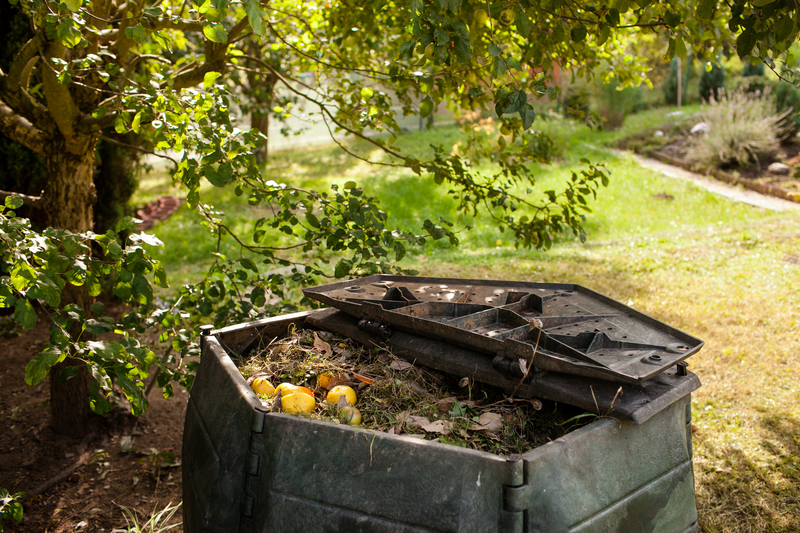Builders Skip 101: Essentials for Beginners
Builders skips have emerged as one of the most popular solutions for effective and efficient waste removal on construction and renovation sites. If you're a homeowner tackling a renovation or a novice managing a small construction project, knowing the fundamentals of builders skips is essential. This in-depth beginners' guide to builders skips will familiarize you with the basics, including skip sizes, types, permits, accepted waste, pricing, and best practices for safe and legal use. By the end, you'll feel confident in hiring and utilizing a builders skip for any project.
What Is a Builders Skip?
A builders skip is a large open-topped waste container designed to load onto specialized skip-carrying lorries. Typically used for holding construction, demolition, and renovation debris, builders skips are versatile and suitable for both residential and commercial projects.
Why Are Builders Skips So Popular?
- High capacity: Capable of handling large volumes of mixed waste.
- Convenience: Delivered and collected at your site.
- Cost-effective: Economical choice for disposing of bulk waste.
- Environmentally friendly: Most waste is sorted and recycled by reputable skip companies.

Types of Skips for Builders
Not all skips are created equal. While the term "builders skip" usually refers to a specific size, it's helpful to understand the broader range of skips available and how they serve distinct purposes.
Common Skip Types
- Mini Skips (2-3 yards): Compact, ideal for small DIY jobs or garden waste.
- Midi Skips (4-5 yards): Suited for home refurbishments or shed clearances.
- Builders Skips (6-8 yards): The classic choice for medium-sized construction, renovation, or demolition projects.
- Large Skips (10-12 yards): Best for bulky but lightweight waste; less common for hardcore materials due to heavy weight when filled.
- Roll-on/Roll-off Skips (20-40 yards): Used for major commercial clear-outs or ongoing large building projects.
The "6 yard" and "8 yard" skips are the most frequently hired skips for building and substantial renovation work, commonly referred to as the standard builders skip size.
Choosing the Right Builders Skip Size
Selecting the correct skip size is crucial for efficiency and cost-saving. Order too small, and you'll need additional skips. Order too large, and you may waste money and space.
Popular Builders Skip Sizes
- 6 Yard Skip: Holds approximately 55-60 standard bin bags. Perfect for removing rubble, concrete, bricks, or bulky renovation waste for a medium property project.
- 8 Yard Skip: Holds approximately 70-80 bin bags. Offers increased capacity for larger construction and demolition jobs. Often considered the largest skip suitable for dense, heavy waste like soil or hardcore.
If in doubt, always round up your estimate. It's more cost-effective to have excess space than to face delays or extra costs for hiring second skips.
Skip Size Tips:
- Estimate waste volume early in your project planning.
- Use a visual guide: a 6 yard skip fits a medium bathroom or small kitchen rip-out.
- Ask your skip hire provider for capacity advice based on your project details.
What Can You Put in a Builders Skip?
A critical part of using a builders skip is knowing what you can and cannot throw into it. Skip hire companies follow strict guidelines to ensure legal and environmentally responsible waste handling.
Typical Acceptable Waste
- Builders rubble, brick, stone, tiles, and concrete
- Hardcore waste (demolition debris)
- Soil, sand, gravel (as long as it's not contaminated)
- Wood, metal, plastic (construction offcuts, window frames, pallets)
- Household items: broken furniture, cabinetry, fixtures
- Non-electrical fittings: doors, skirting boards, flooring offcuts
Prohibited Skip Waste
- Hazardous materials: asbestos, paint, solvents, chemicals, oils, batteries
- Electrical items: fridges, TVs, computers (require WEEE recycling)
- Gas cylinders (full or empty)
- Tyres and vehicle parts
- Plasterboard (unless segregated as pure loads--check with your supplier)
- Medical waste
*Check with your skip provider for a full, up-to-date list of what they accept, as regulations may vary locally.
How to Load Your Builders Skip Efficiently
Proper loading makes the most of your builders skip space and ensures safe, legal removal. Follow these tips for efficient skip loading:
- Break down bulky items to save space.
- Start with flat or heavy items (concrete, slabs, bricks) at the bottom.
- Fill in gaps with smaller debris and lighter waste.
- Never overfill--do not exceed the "load level" mark or the top edge.
- Pack the waste up to the rim for safety and to avoid extra fees.
- Do not include unauthorized items (see waste restrictions above).
Tip: Overfilled skips are illegal to transport and may incur extra charges or require unloading on site.
Do You Need a Permit for Your Builders Skip?
If your builders skip will be placed on a public road, pavement, or verge (i.e., not entirely on private land), you'll need a skip permit from your local council.
Skip Permit Essentials
- Who applies: Usually, your skip hire company will arrange the permit as part of the service.
- Permit costs: Vary by location--typically ?30 to ?80 for 14-28 days.
- Display requirements: The skip may need reflective markings, lamps, and company identification for visibility.
- Location: Some councils restrict skip placement in certain busy or narrow areas.
No permit is needed if the skip is entirely on your private property, such as a driveway or front garden. Always confirm with your provider and council before delivery.
How Much Does a Builders Skip Cost?
The cost of hiring a builders skip depends on several factors:
- Skip size (larger skips cost more but offer better value per volume)
- Location (urban vs. rural, regional price differences)
- Duration of hire (longer periods may incur additional fees)
- Permit requirements (see above)
- Type of waste (mixed loads may cost more than clean hardcore or soil)
Builders Skip Price Guide (2024, UK average):
- 6 yard builders skip: ?180 - ?250 (plus VAT and permit if needed)
- 8 yard builders skip: ?230 - ?300 (plus VAT and permit)
- Permit fees: ?30 - ?80 (location dependent)
*Always request a full quote including VAT, delivery, collection, and any applicable permits.
Steps to Hiring a Builders Skip: A Beginner's Checklist
- Estimate your waste volume and select the right skip size.
- Contact local skip hire companies for quotes and pickup/delivery terms.
- Confirm accepted waste types (explain your project for advice).
- Arrange skip permits if the skip will be on public property.
- Prepare your site: ensure sufficient access and space for lorry drop-off and collection.
- Load the skip efficiently and within capacity limits.
- Book collection or inform the provider when the skip is ready for removal.
Builders Skip Placement and Access Considerations
Carefully plan where your builders skip will be delivered. Consider:
- Vehicle access: Lorries require at least a 3m (10ft) width and clearance overhead.
- Surface: Skips get heavy - avoid weak tarmac, grass, or paving slabs unless protected.
- Driveway protection: Use wooden boards to prevent damage from skip runners.
- Obstructions: Move cars, bins, or low-hanging branches out of the way prior to delivery.
- Neighbours: Inform neighbours if access or shared driveways may be blocked temporarily.
Environmental Responsibility: Skip Waste Recycling
Modern builders skips are a green choice, provided you use a licensed provider. Most reputable skip hire firms sort, recover, and recycle a high percentage of your waste--sometimes over 90%. This keeps construction waste out of landfill and helps you meet legal and environmental obligations.
- Segregate recyclables like metal, clean wood, and cardboard where possible to boost recycling rates.
- Never dispose of hazardous waste in skips--this puts people and the environment at risk.
- Ask your supplier for a waste transfer note or recycling report for commercial projects.

Frequently Asked Questions About Builders Skips
How long can I keep a builders skip for?
Most skip hire companies offer standard hire periods of 7 to 14 days, with extensions available for a small extra fee. Check when booking so you have enough time to complete your project.
Do I need to be present for delivery and collection?
It's best, but usually not essential. Provide clear instructions in advance to avoid placement issues or access problems.
What if I overfill my builders skip?
Do not overfill skips. Legally, skips must only be filled to the level edges. Overfilled skips may be refused collection or require you to remove excess waste, and extra charges may apply.
Can I move my skip after it's delivered?
No. Do not attempt to move a builders skip once delivered, as they are heavy and may cause damage or legal issues if repositioned without permission.
How do I dispose of hazardous waste?
Contact a specialist hazardous waste disposal service. Never put hazardous materials like asbestos, paint, or chemicals in your builders skip.
Conclusion: Builders Skips Made Easy
For any beginner, builders skips are an indispensable tool for efficient waste management on site. Choosing the right skip size, following legal requirements, loading safely, and partnering with a reputable hire company ensures smooth, cost-effective, and environmentally friendly waste removal for your building, renovation, or DIY project.
If you're about to start a project, use this Builders Skip 101 guide to select, hire, and fill your skip with confidence. Efficient builders skip use means less hassle, cleaner sites, and a safer, greener building environment for everyone.
Need further help? Contact local, licensed builders skip hire experts for tailored advice and services in your area.